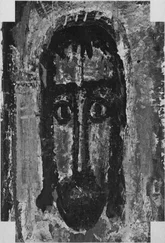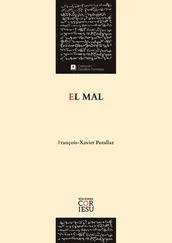Francois-Xavier Meunier - Dual Innovation Systems
Здесь есть возможность читать онлайн «Francois-Xavier Meunier - Dual Innovation Systems» — ознакомительный отрывок электронной книги совершенно бесплатно, а после прочтения отрывка купить полную версию. В некоторых случаях можно слушать аудио, скачать через торрент в формате fb2 и присутствует краткое содержание. Жанр: unrecognised, на английском языке. Описание произведения, (предисловие) а так же отзывы посетителей доступны на портале библиотеки ЛибКат.
- Название:Dual Innovation Systems
- Автор:
- Жанр:
- Год:неизвестен
- ISBN:нет данных
- Рейтинг книги:4 / 5. Голосов: 1
-
Избранное:Добавить в избранное
- Отзывы:
-
Ваша оценка:
- 80
- 1
- 2
- 3
- 4
- 5
Dual Innovation Systems: краткое содержание, описание и аннотация
Предлагаем к чтению аннотацию, описание, краткое содержание или предисловие (зависит от того, что написал сам автор книги «Dual Innovation Systems»). Если вы не нашли необходимую информацию о книге — напишите в комментариях, мы постараемся отыскать её.
Dual Innovation Systems — читать онлайн ознакомительный отрывок
Ниже представлен текст книги, разбитый по страницам. Система сохранения места последней прочитанной страницы, позволяет с удобством читать онлайн бесплатно книгу «Dual Innovation Systems», без необходимости каждый раз заново искать на чём Вы остановились. Поставьте закладку, и сможете в любой момент перейти на страницу, на которой закончили чтение.
Интервал:
Закладка:
These studies reveal all the difficulties faced by researchers and experts in their efforts to identify technologies that pass from one sector to another and to draw a list of the industrial sectors in which they are used. Albrecht (in Gummett and Reppy 1988) points out the difficulty in measuring these spin-offs. He highlights the fact that this concept involves two dimensions whose differentiation is important: an intrasector dimension and an intersector dimension, the latter being rarely mentioned at that time, which further complicated the identification of these dual-use technologies.
Centered on dual-use technologies, this conception does not appear precise enough to account for the complexity of interactions between civilian and defense sectors. Indeed, merging the two terms – dual and use – together does not yield a concept that accounts for all the differences in how the defense world and the civilian world interact in the development of a technology (Fiott 2014).
Few authors presently believe that this dual use is intrinsically related to the nature of technology. The proposed idea is that this duality depends above all on the process of appropriation by a particular social environment (Stowsky 2004). Hence, transfer modalities in particular are studied.
This understanding of duality “relates to the ways in which objects (products and artifacts) used in a field can be adapted to others” (Molas-Gallart 1997). This raises the question of mechanisms for technology transfers from civilian to defense sectors (spin-in) and from defense to civilian sectors (spin-off). In this approach, the mutual nature of duality is more often highlighted. This leads to the idea of a long-term relation between civilian and military innovation and can generate trend reversals (Galbraith et al. 2004).
1.2.2. Technological duality
Dual technology transfer is a particular case of transfer occurring when a technology developed for military (or civilian) purposes is transferred toward a civilian (or military) application (Molas-Gallart 1998). Rooted in technology transfers, duality reinforces the hypothesis according to which technologies, strictly speaking, are the object of duality, but no longer highlights the intrinsically dual nature of certain technologies.
By differentiating between direct transfers and transfers requiring an adaptation of technology, as well as between transfers operating within the same unit and those involving two units, Molas-Gallart differentiates four main types of transfers (see Table 1.1). This typology makes it possible to specify the most efficient mechanisms depending on the type of transfer studied. This approach has the advantage of highlighting the prominent role that certain actors or institutions can play, depending on the type of transfer (technology broker, scientific journals, mixed research laboratory, service provider, consulting and outsourcing, etc.).
Table 1.1. The four main types of transfer (source: Molas-Gallart 1997)
| Mode | No adaptation | Adaptation |
| Actors | ||
| Transfer internal to a single unit | Internal straight transfer | Internal adaptational transfer |
| Transfer between two or more units | External straight transfer | External adaptational transfer |
However, from a methodological perspective, this does not solve the question of recognizing technologies that can be the object of a dual transfer. Several identification methods are thus considered in various research works.
The most commonly used method employs case studies. In defense economics, the interest of this method is in bypassing the reliability problems of available data on technologies. Many case studies have been conducted on various sectors or on various technologies, such as machine-tools, civilian aeronautics, information technologies with semiconductors, data processing and the Internet, to name just a few (Mowery 2010); for a full summary see the prospective strategy study conducted by IRIS 1 . These case studies show the diversity of situations and the dual transfer methods, but do not offer an overall view on the subject.
A further solution enabling the identification of a technology passing from the military sector to the civilian sector involves the study of the financing source and can be an identification solution. Indeed, it is at least possible to formulate the hypothesis that the research programs of a defense ministry a priori assign a military nature to innovations that could result from the program. It marks these technologies as military or at least dual. It is on this principle that certain analyses rely for the study of technology transfers from the public R&D to market sectors, and for stressing the influence of the military nature of the innovations on these transfers (Chakrabarti et al. 1993; Chakrabarti and Anyanwu 1993). It is however difficult to maintain a clear distinction: what falls within the defense budgetary perimeter varies from one country to another, depending on its history, on the size of its Defense Industrial and Technological Base (DITB), on its defense strategy choices, etc.
The actors can also play the role of technology markers. One technology developed by actors of the DITB would be qualified as defense technology, unlike others. This is, among others, one of the approaches chosen by Chinworth (2000a) to analyze duality in Japan. This method makes it possible to approach the question from a global perspective, but involves the risk of considering, in the analysis, technologies developed by manufacturers that are partly active in the civilian field, and hence not necessarily intended for defense purposes.
Finally, the most clear-cut approach is to consider that certain technologies are intrinsically associated with defense activity. This is, for example, the approach of Acosta et al. (2013, 2017), which assume that certain technological classes of the International Patent Classification (IPC) are by hypothesis technological classes in the defense field. Hence, studying the sectors of application of these technologies, which extend beyond the defense perimeter, these authors measure their level of duality. Methods can complement each other and thus contribute to refining the identification of technologies that are relevant for study (Chinworth 2000b).
The analysis of technologies, and notably that of the knowledge composing them, is an interesting approach. Indeed, beyond the technological object itself, technology can be defined through the set of knowledge it encompasses (Carlsson and Stankiewicz 1991). Duality is then related to knowledge dissemination between civilian and defense sectors. This reinforces the idea that it is difficult to a priori determine if a technology is dual or not (Mérindol 2005). Defense programs are knowledge-intensive projects, with varied sources and unpredictable final results. Consequently, knowledge duality may cause know-how transformation and generate opportunities, both for civilian manufacturers and for those active in the defense sector (Guillou et al. 2009).
From this perspective, the existence of either civilian or military prevalence in the duality process is more difficult to interpret than in the spin-off paradigm, as defined by Alic et al. (1992). In order to benefit from duality, “the whole challenge resides […] in the equilibrium between specialization and building a joint knowledge base by the actors” (Mérindol 2005, p. 52).
This analysis in terms of knowledge leads to two opposite conceptions:
– the first would be to consider knowledge duality as a spillover, strictly speaking (a term that is more relevant than spin-off and spin-in in knowledge economics). Then duality would be the result of spillovers (knowledge transfers) between civilian and military fields, without premeditation on behalf of any of them. Duality is then perceived as a process of translation from one field of application to another. This view is finally quite close to that proposed by Chinworth (2000a) and Acosta et al. (2013, 2017);
Читать дальшеИнтервал:
Закладка:
Похожие книги на «Dual Innovation Systems»
Представляем Вашему вниманию похожие книги на «Dual Innovation Systems» списком для выбора. Мы отобрали схожую по названию и смыслу литературу в надежде предоставить читателям больше вариантов отыскать новые, интересные, ещё непрочитанные произведения.
Обсуждение, отзывы о книге «Dual Innovation Systems» и просто собственные мнения читателей. Оставьте ваши комментарии, напишите, что Вы думаете о произведении, его смысле или главных героях. Укажите что конкретно понравилось, а что нет, и почему Вы так считаете.











